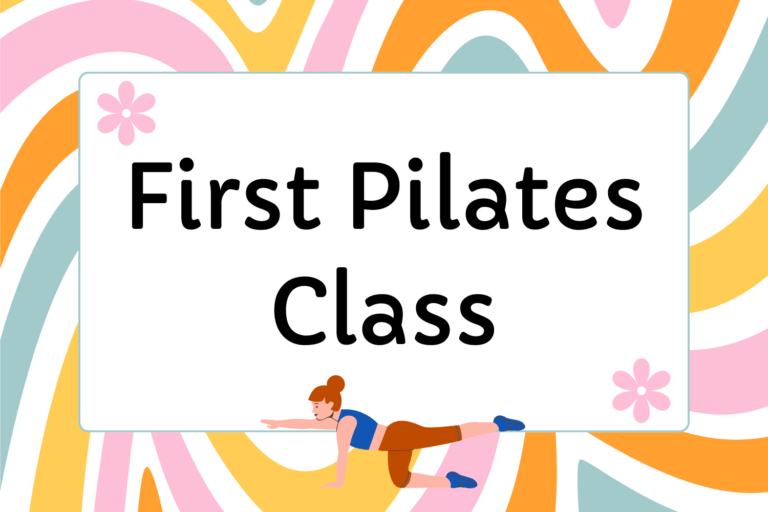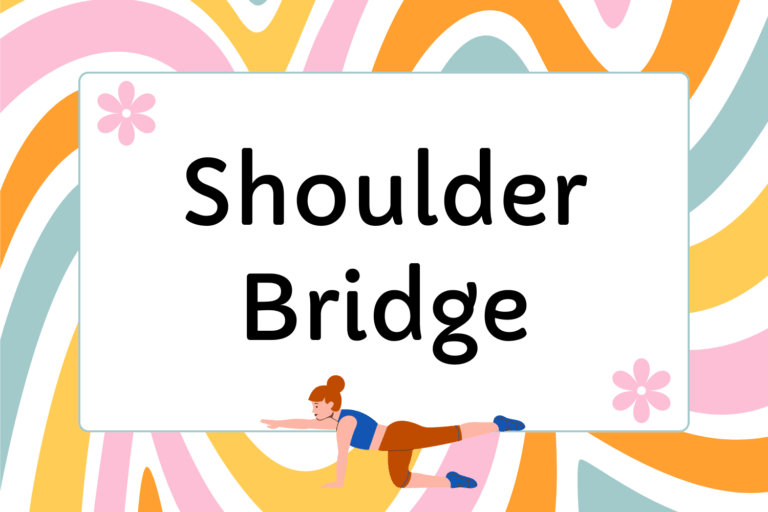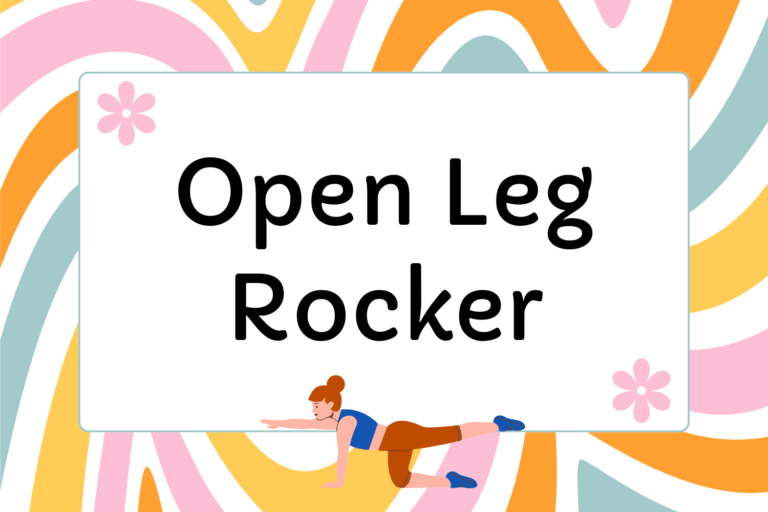A
Abdominals (Abs) – The group of six core muscles that control and support movement in the spine. The abdominal muscles span from the ribcage to the pelvis and form the muscular wall of the stomach.
Abduction – The act of moving a limb away from the center of the body. The opposite of adduction.
Adduction – The act of moving a limb closer to the center of the body. The opposite of abduction.
Antagonist muscle – The term used to describe a muscle that works in opposition to another muscle. For example, the triceps and the biceps – when one stretches, the other contracts.
Anterior – Referring to the front or forward-most surface. For example, the anterior part of the torso refers to the area containing the abdominals, chest, shoulders, and hips.
Anterior tilt – The term used when the pelvis is tipped forward, with the hip bones further back than the pubic bone. Imagining the pelvis as a bowl of water, anterior tilting causes the water to spill forward, over the thighs.
ASIS – The anterior superior iliac spine. More commonly identified as the hip bones located on the front of the pelvis.
Axis – The second vertebra below the base of the neck. It is referred to in Pilates in conjunction with the “tucked” head posture assumed in reclining positions while curving the neck from above the axis.
B
Barrel – An apparatus with a round shape designed to support the lower back and aid in certain Pilates exercises.
Body-mind connection – One of the most important principles of Pilates. The belief that the mind should be used to focus the movement of the body, while the body in turn encourages concentration of the mind.
Bodywork – A broad term used to describe the massage or manipulation of various parts of the body, including physical therapy, Pilates, massage therapy, and much more.
Breathing 100s – A fundamental exercise in Pilates, that is frequently presented as a warm up in the first exercise of class. 100’s use the powerhouse, limbs, breath and mind to incorporate all of Pilates’s philosophy into one exercise.
C
Cadillac – An apparatus designed by Pilates, often called the “rack” or “trapeze table,” the Cadillac is essentially a table with bars running perpendicularly and parallel overhead. It is used to provide additional gravitational resistance in exercises.
Centering – One of the six principles of Pilates, centering is the concept that all movements originate from and are supported by the Powerhouse.
Cervical vertebrae – The seven vertebrae that comprise the neck. Also known as the cervical spine.
Coccyx – The four fused bones located directly below the sacrum. More commonly known as the tailbone.
Concentric muscle contraction – The shortening of a muscle when it is tensed. The abdominals are concentrically contracted during 100s, as the muscles are tensed in order to support the spine.
Contrology – The belief that the mind has control over the body, a concept introduced by Pilates and supported by the method’s original 34 exercises.
Counter stretch – A stretch performed after an exercise that moves the muscles in the opposite direction than that of the original exercise. Counter stretches are used to ensure balance in the body and an evenness of sides.
D
Diaphragmatic breathing – Engaging the abdominal and back muscles to inhale and exhale; utilizing the diaphragm – a large muscle just beneath the lungs–to take in oxygen, as opposed to solely inflating the lungs.
E
Eccentric muscle contraction – The lengthening out of a muscle as it tenses due to opposing forces in the joints. For example, moving an arm from a bent position to a straight position causes eccentric contraction in the triceps, as the muscle is tensing to straighten the arm, but lengthening as the distance between joints is increased.
Extension – Moving any limb such that it extends away from the joint. For example, lifting a leg straight off the ground is an extension, as it is pulling the leg away from the hip joint.
F
Feet standing – A position in which the practitioner is lying supine, with the soles of the feet planted on the floor and the knees bent in, aimed at the ceiling.
First-generation teacher – The name given to any Pilates instructor who learned the method directly from Joseph Pilates.
Flexion – Moving any limb such that it comes closer to the joint it is attached to; for example, bending an arm is flexion, as the arm is moving inward toward the shoulder joint.
H
Head nod – A position in which the chin is slightly tucked, causing flexion in the first two vertebrae of the cervical spine. The head nod is used frequently in Pilates to protect the cervical spine and back from injury.
Hip flexors – A group of eight muscles that engage when the legs are flexed from the hip joint.
Hyperextension – When a joint moves past the normal range of motion. Hyperextension occurs frequently in the elbow and knee and is discouraged in Pilates due to the stress it places on joints, since the surrounding muscle groups are not usually in a position of proper support.
I
Imprinted spine – A position used frequently to protect the lower back in Pilates. When lying supine, an imprinted spine can be identified if the space between the lumbar spine and the floor is closed through the engagement of the abdominal muscles.
Insertion – The point at which a muscle connects to a bone at its end. Usually an area of increased mobility.
Isometric contraction – The term used to describe a muscle tensing without lengthening. For example, gripping something with your hand causes isometric contraction in those muscles, as they’re tensing without lengthening outward.
K
Kyphosis – A condition in which the thoracic spine is significantly more curved than is natural. Also known as a “hunchback.”
L
Lateral pelvic tilt – When the pelvis is tilted such that, from the front, one hip bone appears higher than the other.
Ligament – Tissue that connects bone to bone.
Lordosis – A condition in which the lumbar spine curves significantly more than is natural, causing the pelvis to tilt downward. Also known as a “swayback.”
Lumbar spine/vertebrae – The five vertebrae located in the lower region of the spine. More commonly known as the lower back.
Lumbo-pelvic region – A term used to describe both the lumbar spine and the pelvis which are used frequently together in Pilates.
Lymphatic system – The network of vessels that circulate and dispose of bodily fluid. Pilates stimulates this system, with the frequent stressing of pelvic floor muscles encouraging the release of fluid following class.
M
Magic circle – A circular metal ring invented by Joseph Pilates and used for resistance when performing the exercises.
Mat – The rubbery, firm sheet of material used to lay on when performing Pilates exercises. If unavailable, it can be substituted with a beach towel or sheet of comfortable material.
Medial – Any movement that brings a limb closer to the midline of the body. For example, bringing the arms from an extended position to being relaxed at the sides is a medial movement.
Mind-body conditioning – One of the key concepts in Pilates, mind-body conditioning is the belief that the mind and body need each other, connect with each other, and benefit from each other’s activity and exercise.
Modification – Various ways in which an exercise can be altered or made more or less difficult to accommodate the needs of the practitioner.
N
Navel to spine – An imagery term used to describe the action of drawing in and up the abdominal muscles by exhaling and imagining the belly button drawing inward toward the back of the body. That contraction increases stability in the spine, which strengthens the Powerhouse and helps prevent lower back injury.
Neutral spine – The term used to describe the spine’s natural, aligned state. It is the ideal position to be in while practicing Pilates.
O
Origin – The point at which a muscle begins and attaches to a bone. The opposite end of the insertion.
P
Pelvic floor – The muscles that surround the coccyx, pubic bone, and ischium. When engaged, they help stabilize the pelvis.
Pelvic rotation – A position in which one hip bone protrudes farther forward in space than another, causing a corkscrew-like twist in the lower spine.
Pelvic tilt – The rotation that tips the pelvis either forward or backward.
Pelvis – Refers to the part of the body that includes the coccyx, sacrum, and hip bones.
Pilates method – The term for the philosophy and practice of that philosophy developed by Joseph Pilates, and consisting of exercises performed either reclining on a mat or with the use of apparatuses. The Pilates method is designed to strengthen, stretch, and promote general well-being in both the body and the mind.
Pilates on ball – The act of performing Pilates exercises with the use of a large rubber ball placed under the torso. The ball decreases natural stability, thus achieving a more difficult workout.
Pilates performer – A home-based apparatus designed to increase the intensity and minimize the injury of Pilates exercises. The equipment is multifunctional, employing the use of springs, levers, and bars for different exercises.
Pilates principles – The six tenets created by Joseph Pilates that form the philosophical basis of his method. The six principles include: breathing, centering, control, concentration, flowing movement, and precision.
Pilates stance – A position frequently used in Pilates exercises with the feet pointed out at 45-degree angles, the thighs rotated outward from the hip sockets, and the heels pressed together. The feet may be alternately pointed, flexed, or relaxed.
Posterior – Referring to the butt or back-most surface of the body.
Posterior tilt – The position in which the pelvis is tilted backward, with the hip bones placed further forward in space than the pubic bone. If the pelvis is imagined as a bowl of water, a posterior tilt spills the water backward, over the lower back.
Powerhouse – The term used for the part of the body that includes the hips, abdominal muscles, and buttocks that forms the center and origin of all movement and strength in Pilates.
Prone – A position in which one is lying face down.
PSIS – An abbreviation for the posterior superior iliac spine.
R
Rack – See Cadillac.
Reciprocal – When a movement alternates between one side and the other.
Reformer – The most commonly used Pilates apparatus, after the mat. The reformer is a mobile platform connected with a series of springs, bars, pulleys, and straps designed to aid in the strengthening of the Powerhouse and the exercises of Pilates.
S
Sacrum – The four to five vertebrae fused together and located under the lumbar spine.
Scapulae – The shoulder blades.
Scoop the abs – An imagery term describing the same action as navel to spine, in which the front core muscles are engaged and pulled in toward the spine.
Sequential movement – The flow of one movement into another without pause or hesitation. One of the six principles of Pilates.
Sits bones – The ischial tuberosity. Easily identifiable as the two bones felt under the pelvis upon sitting.
Spine – The five sections of 24 vertebrae that comprise the back.
Staccato breath – A quick and accented pattern of breathing used to prevent breath-holding and the storing of tension in the body.
Supine – The position in which one is lying with the back on the floor.
T
Tabletop legs – A position in which the practitioner is lying supine, with the legs raised and bent such that the thighs are perpendicular to the floor with the shins parallel to the floor, forming a “tabletop.”
Tendon – Tissue that connects muscle to bone. The Achilles tendon, located at the back of the heel, is a common tight tendon that can cause pain in the calves.
Thoracic vertebrae – The twelve vertebrae located above the lumbar vertebrae and below the cervical vertebrae. Also known as the middle and upper back.
Trapeze table – See Cadillac.
Two way energy – The theory of utilizing opposing forces to stabilize the body. For example, grounding through the feet and lifting through the spine and head.
U
Unilateral – Any motion in which one side of the body is moving while the other side is encouraged to remain stable.
V
Vertebrae – The individual bones of the spine. Pilates aims to improve the alignment between the vertebrae, creating a more stable, even, and healthy spine.
Z
Zip it up – An imagery term used to describe the pulling in of the abdominal muscles toward the spine and engaging the pelvic floor to create stability in the Powerhouse.





